NCERT Exemplar for Class 11 Biology Chapter 3 Plant Kingdom, provided here, are prepared by subject experts at BYJU’S to assist students in their studies. These exemplar solutions will give you in-depth knowledge of the topics covered in this chapter, which will help you prepare well for CBSE Class 11 as well as entrance examinations.
NCERT exemplar solutions for the chapter, Plant Kingdom, provide answers to the questions provided in the NCERT exemplar book, along with important questions and answers prepared by subject experts at BYJU’S. Studying these solutions will surely help you clear all your doubts and guide you in scoring good marks in the annual exam.
Download NCERT Exemplar for Class 11 Biology Chapter 3 Plant Kingdom PDF
Access NCERT Exemplar Solutions for Class 11 Biology Chapter 3
MULTIPLE CHOICE QUESTIONS
1. Cyanobacteria are classified under
a. Protista
b. Plantae
c. Monera
d. Algae
Solution:
Option (c) is the answer.
2. The fusion of two motile gametes which are dissimilar in size is termed as
a. Oogamy
b. Isogamy
c. Anisogamy
d. Zoogamy
Solution:
Option (c) is the answer.
3. Holdfast, stipe and frond constitute the plant body in case of
a. Rhodophyceae
b. Chlorophyceae
c. Phaeophyceae
d. All of the above
Solution:
Option (c) is the answer.
4. A plant shows thallus level of organization. It shows rhizoids and is
haploid. It needs water to complete its life cycle because the male gametes
are motile. Identify the group to which it belongs to
a. Pteridophytes
b. Gymnosperms
c. Monocots
d. Bryophytes
Solution:
Option (d) is the answer.
5. A Prothallus is
a. A structure in pteridophytes formed before the thallus develops
b. A sporophytic free-living structure formed in pteridophytes
c. A gametophyte free-living structure formed in pteridophytes d. A primitive structure formed after fertilization in pteridophytes
Solution:
Option (c) is the answer.
6. Plants of this group are diploid and well adapted to extreme conditions. They grow bearing sporophylls in compact structures called cones. The group in reference is
a. Monocots
b. Dicots
c. Pteridophytes
d. Gymnosperms
Solution:
Option (d) is the answer.
7. The embryo sac of an Angiosperm is made up of
a. 8 cells
b. 7 cells and 8 nuclei
c. 8 nuclei
d. 7 cells and 7 nuclei
Solution:
Option (b) is the answer.
8. If the diploid number of a flowering plant is 36. What would be the
chromosome number in its endosperm
a? 36
b. 18
c. 54
d. 72
Solution:
Option (c) is the answer.
9. Protonema is
a. Haploid and is found in mosses
b. Diploid and is found in liverworts
c. Diploid and is found in pteridophytes
d. Haploid and is found in pteridophytes
Solution:
Option (a) is the answer.
10. The giant Redwood tree (Sequoia sempervirens) is a/an
a. Angiosperm
b. Free fern
c. Pteridophyte
d. Gymnosperm
Solution:
Option (d) is the answer.
VERY SHORT ANSWER TYPE QUESTIONS
1. Food is stored as Floridian starch in Rhodophyceae. Mannitol is the reserve food material of which group of algae?
Solution:
Mannitol is the reserve food material of Phaeophyceae, the brown algae.
2. Give an example of plants with
a. Haplontic life cycle
b. Diplontic life cycle
c. Haplo- diplontic life cycle
Solution:
A. Volvox
B.Pinus
C. Ectocarpus
3. The plant body in higher plants is well-differentiated and well developed. Roots are the organs used for absorption. What is the equivalent of roots in the less developed lower plants?
Solution:
Rhizoids, these are the thread-like structures. In liverworts unicellular rhizoids are present and in mosses multicellular rhizoid with oblique septa are present.
4. Most algal genera show haplontic lifestyle. Name an alga which is
a. Haplo-diplontic
b. Diplontic
Solution:
A. Ectocarpus is the algae which are Haplo-diplontic
B. Fucus is the algae which are diplontic
5. In Bryophytes male and female sex organs are called ____________ and __________.
Solution:
A) antheridium and B) archegonium
SHORT ANSWER TYPE QUESTIONS
1. Why are bryophytes called the amphibians of the plant kingdom?
Solution:
They inhabit two well-defined habitats i.e. land and water.
b) Bryophytes can complete their life cycle without water; water is required for fertilisation,
c) Water also plays an important role in dehiscence of antheridium and archegonium.
d) As it lacks proper vasculature, water conduction occurs through capillary action.
Hence a thin film of water is required on land, for survival
2. The male and female reproductive organs of several pteridophytes and gymnosperms are comparable to floral structures of angiosperms. Attempt to compare the various reproductive parts of pteridophytes and gymnosperms with reproductive structures of angiosperms.
Solution:
| Reproductive parts of pteridophytes and gymnosperms | Reproductive structures of angiosperms |
| Strobili/cone
Microsporophyll Megasporophyll Microsporangium Megasporangium |
Flower
Stamen Pistil/Carpel Anther Ovule |
3. Heterospory i.e., the formation of two types of spores – microspores and megaspores is a characteristic feature in the life cycle of a few members of pteridophytes and all spermatophytes. Do you think heterospory has some evolutionary significance in the plant kingdom?
Solution:
Heterospory led to in situ embryo development. The embryo derives nutrition from the female gametophyte and is better protected. Heterospory led to the evolution of seed habit, which helped the plants to flourish and tide over long periods of unfavourable conditions.
4. How far does Selaginella, one of the few living members of Lycopodiales (pteridophytes), fall short of seed habit?
Solution:
Selaginella produces macro and microspores. The megaspores and microspores germinate and produce female and male gametophytes. The embryo was retained within the female gametophyte up to the development of rhizophore, roots and leaves only. Hence, there is no complete retention of an embryo. The seeds of Selaginella and Lycopodium failed to develop protective covering called the integument.
5. Each plant or group of plants has some phylogenetic significance concerning evolution: Cycas, one of the few living members of gymnosperms is called as the ‘relic of past’. Can you establish a phylogenetic relationship of Cycas with any other group of plants that justifies the above statement?
Solution:
Cycas is the connecting link between Gymnosperms and Pteridophyte. They show similarities with pteridophytes like flagellated antherozoids, circinate ptyxis, megasporophyll is leaf-like, presence of archegonia etc.
6. The heterosporous pteridophytes show certain characteristics which are the precursor to the seed habit in gymnosperms. Explain.
Solution:
Genera like selaginella, Sylvania, Marsilea etc., produce two kinds of spores. Micro and macrospores are known as heterosporous.
(i) Evolutionary heterospory
ii) In-situ development of the embryo within the female gametophyte.
iii) The decrease in the number of megaspores to one.
7. Comment on the lifecycle and nature of a fern prothallus.
Solution:
1. Fern shows diplo-haplontic life cycle.
2. Diploid sporophyte represents the dominant, independent, photosynthetic plant body.
3. The sporophyte bears sporangia which produce spores by meiosis.
4. These spores germinate to form free-living prothallus, which represents a gametophyte.
5. Sexual reproduction: syngamy results in the formation of a diploid zygote. Zygote germinates into a diploid sporophyte.
Prothallus:
1. It represents the gametophytic phase.
2. Multicellular, independent, green, photosynthetic thallus.
3. It needs damp and shady places.
4. Bears sex organs, rhizoids and food-laden parenchymatous cells.
8. How are the male and female gametophytes of pteridophytes and gymnosperms different from each other?
Solution;
Pteridophytes
Gymnosperm
Male gametophytes are the anthurium
Cone may or may not be present
Motile male gametes are produced
Female egg not enclosed in an ovule
Antheridium absent
Cones distinctive feature
Non-motile gametes
Neck canal cells are absent
9. In which plant will you look for mycorrhiza and coralloid roots? Also, explain what these terms mean.
Solution;
Mycorrhiza can be seen in Pinus and coralloid root in Cycas.
Mycorrhiza – system association between the roots of higher plants & fungi. Fungi help the plants in the absorption of nutrients, especially phosphorus in return, they go to the shelter.
Coralloid roots – when the roots of higher plants like Cycas show association with BGA. It is also an example of a symbiotic association
LONG ANSWER TYPE QUESTIONS
1. The gametophyte is a dominant phase in the life cycle of a bryophyte. Explain.
Solution:
Due to the alteration in the gametophytic and sporophytic life, Bryophyte shows haplodiplonic life cycle. The major part is dominated by the haploid gametophytic phase. They are independent, photosynthetic and haploid phase. Inside gametophyte, the antheridium and archegonia are formed. Later fertilization will occur, and zygote will be formed. Zygotes develop into sporophytes which is small & is dependent on the gametophyte for water and food.
2. With the help of a schematic diagram describing the haplo-diplontic life cycle pattern of a plant group.
Solution:
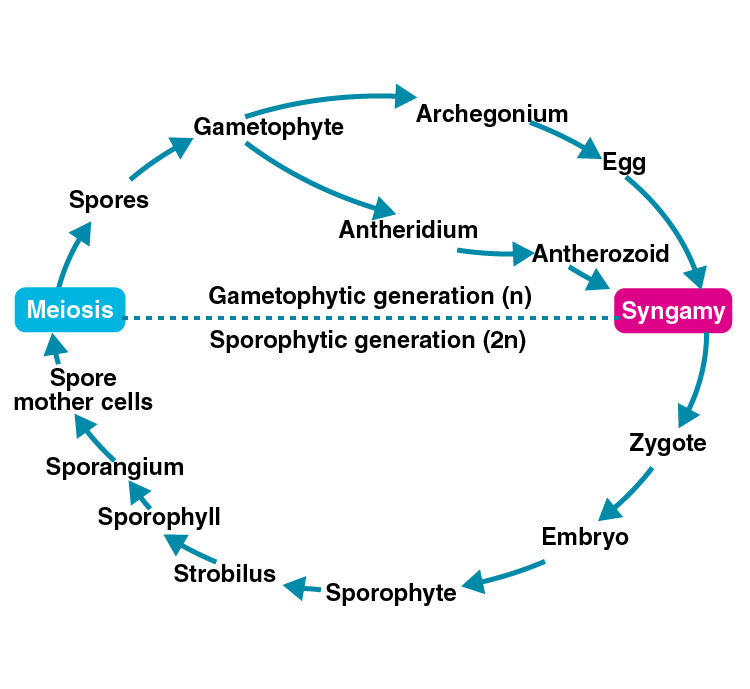
Alternation of generation takes place between gametophyte & sporophyte. i.e. the haploid & diploid phase hence called the haplodiplontic life cycle.
3. Lichen is usually cited as an example of ‘symbiosis’ in plants where an algal and a fungal species live together for their mutual benefit. Which of the following will happen if algal and fungal partners are separated from each other?
a. Both will survive and grow normally and independent of each other.
b. Both will die
c. The algal component will survive while the fungal component will die.
d. The fungal component will survive while the algal partner will die. Based on your answer, how do you justify this association as symbiosis?
Solution:
b) Both will die
In the symbiotic relationship between algae & fungi, both are dependent on each other for their basic needs essential for survival. The algal part synthesises food for fungi & fungi take up water & minerals for algae. If separated, both will die.
4. Explain why sexual reproduction in angiosperms is said to take place through double fertilization and triple fusion. Also, draw a labelled diagram of the embryo sac to explain the phenomena.
Solution:
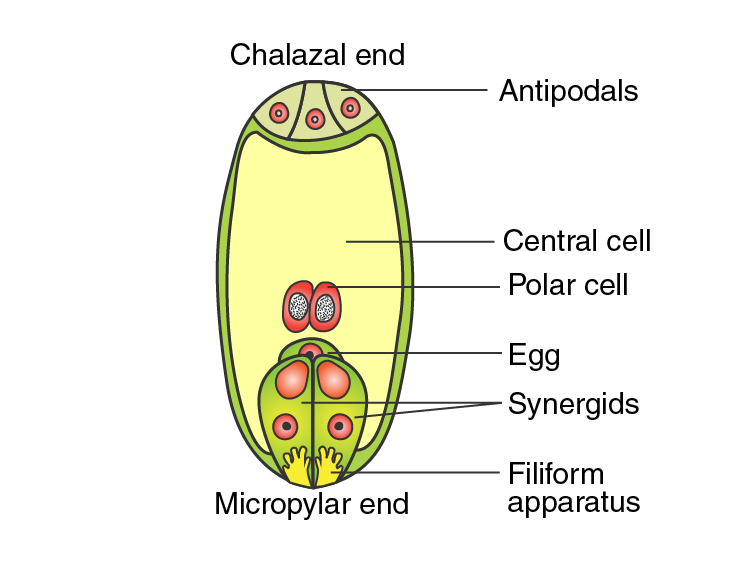
The 2 male nuclei enter the embryo sac, one of the male gametes fuses with the egg to form a diploid zygote & the other male gamete fuses with a diploid secondary nucleus to form triploid primary endosperm nucleus (PEN). Therefore the two fusion is called double fertilization.
5. Draw labelled diagrams of
a. Female and male thallus of a liverwort.
b. Gametophyte and sporophyte of Funaria.
c. Alternation of generation in Angiosperm.
Solution:
A
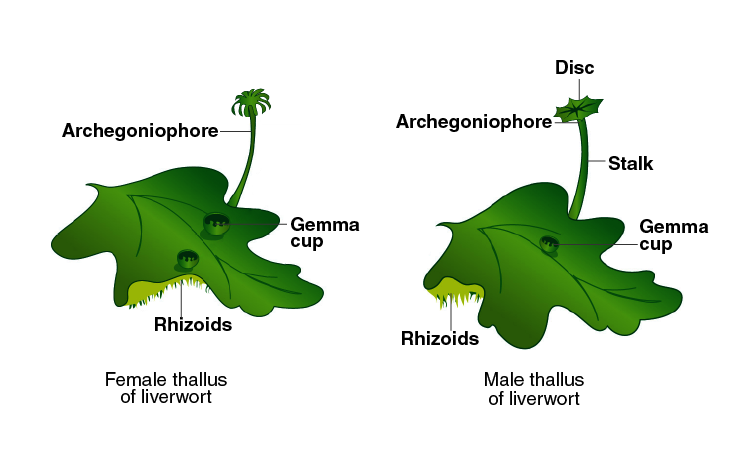
B
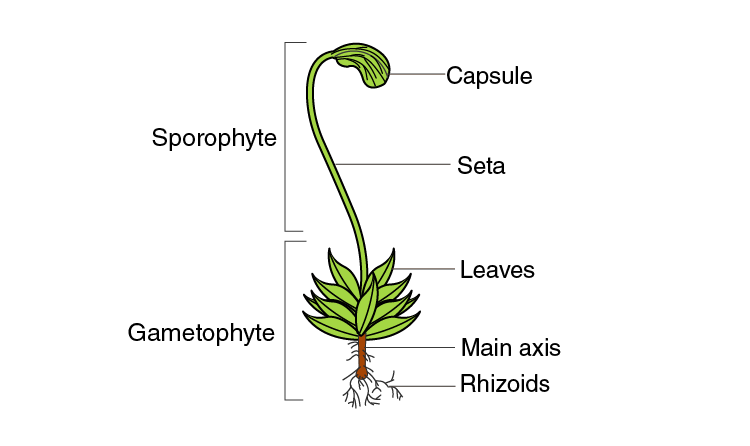
C
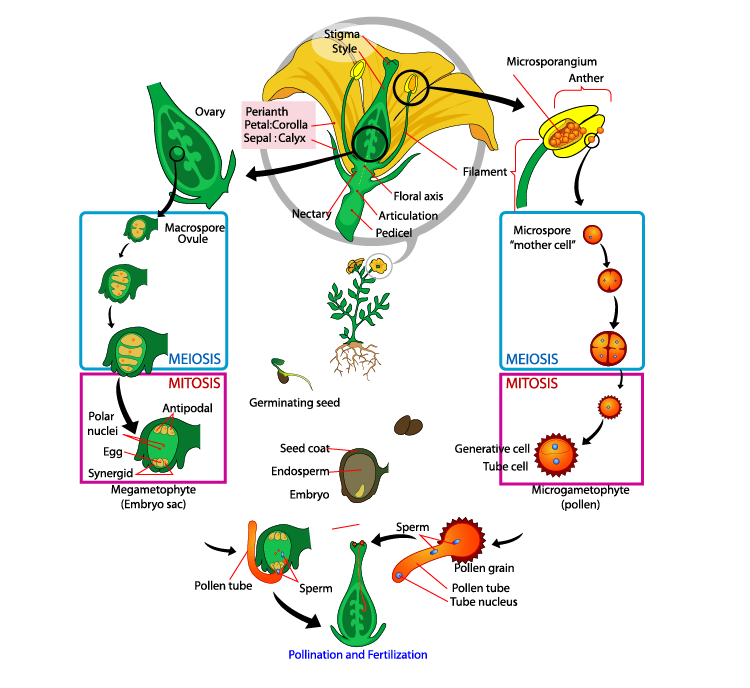
The plant kingdom consists of all the different types of plants and trees. It consists of several subgroups of plants and trees that we can encounter in our everyday life. All the living organisms in the plant kingdom are multicellular and eukaryotic. Food in plants gets synthesised due to the presence of chloroplasts, and plants are autotrophic in nature.
Important Topics of Class 11 Biology Chapter 3 Plant Kingdom
- Algae
- Bryophytes
- Pteridophytes
- Gymnosperms
- Angiosperms
- Plant Life Cycles and Alternation of Generations.
| Also Access |
| NCERT Solutions for Class 11 Biology Chapter 3 |
| CBSE Notes for Class 11 Biology Chapter 3 |
BYJU’S provides you with NCERT solutions, notes, study materials, previous years’ question papers, sample papers, worksheets, exercises, HOTS and important questions of all the subjects and classes. To get access to all these resources, register with BYJU’S website or download BYJU’S – The Learning App for an effective learning experience.
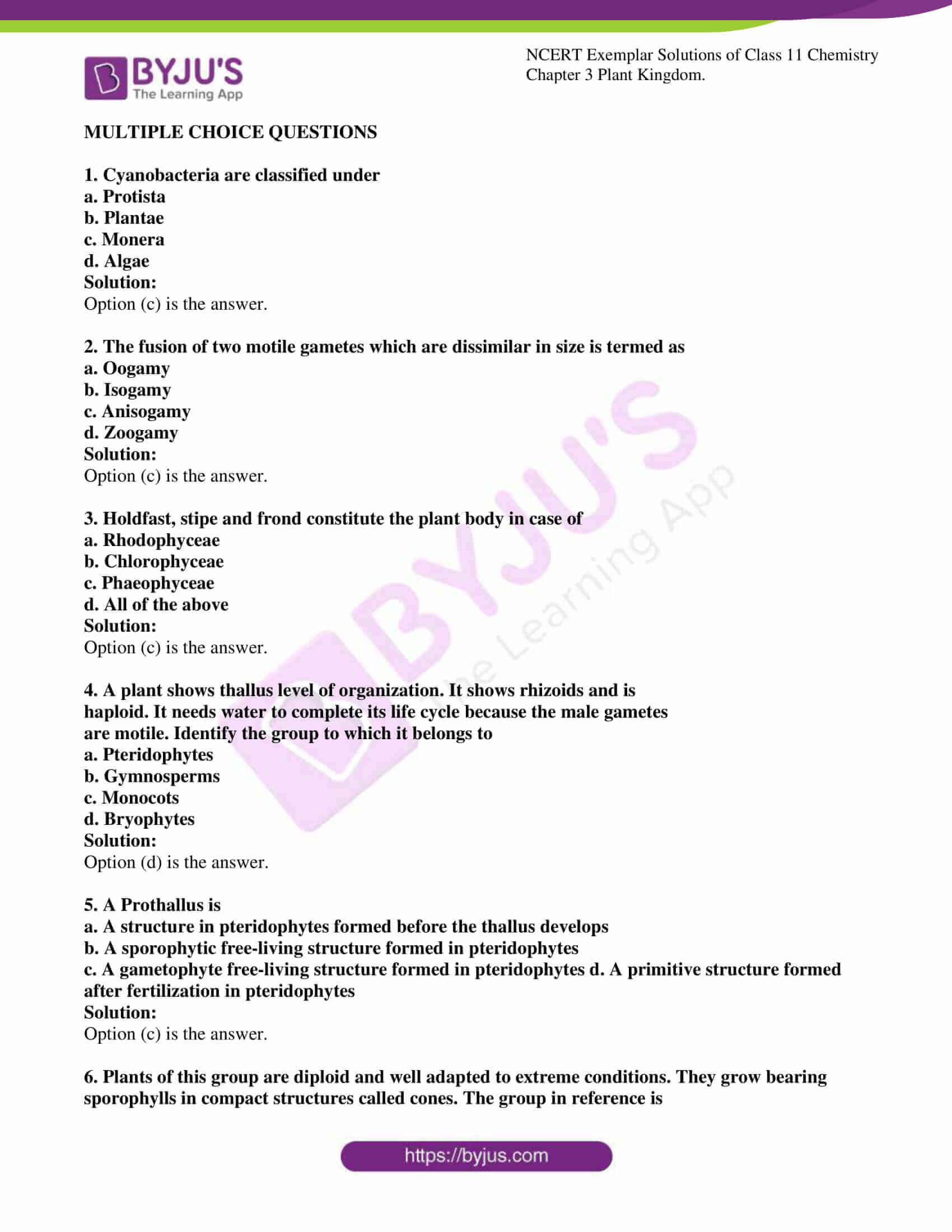
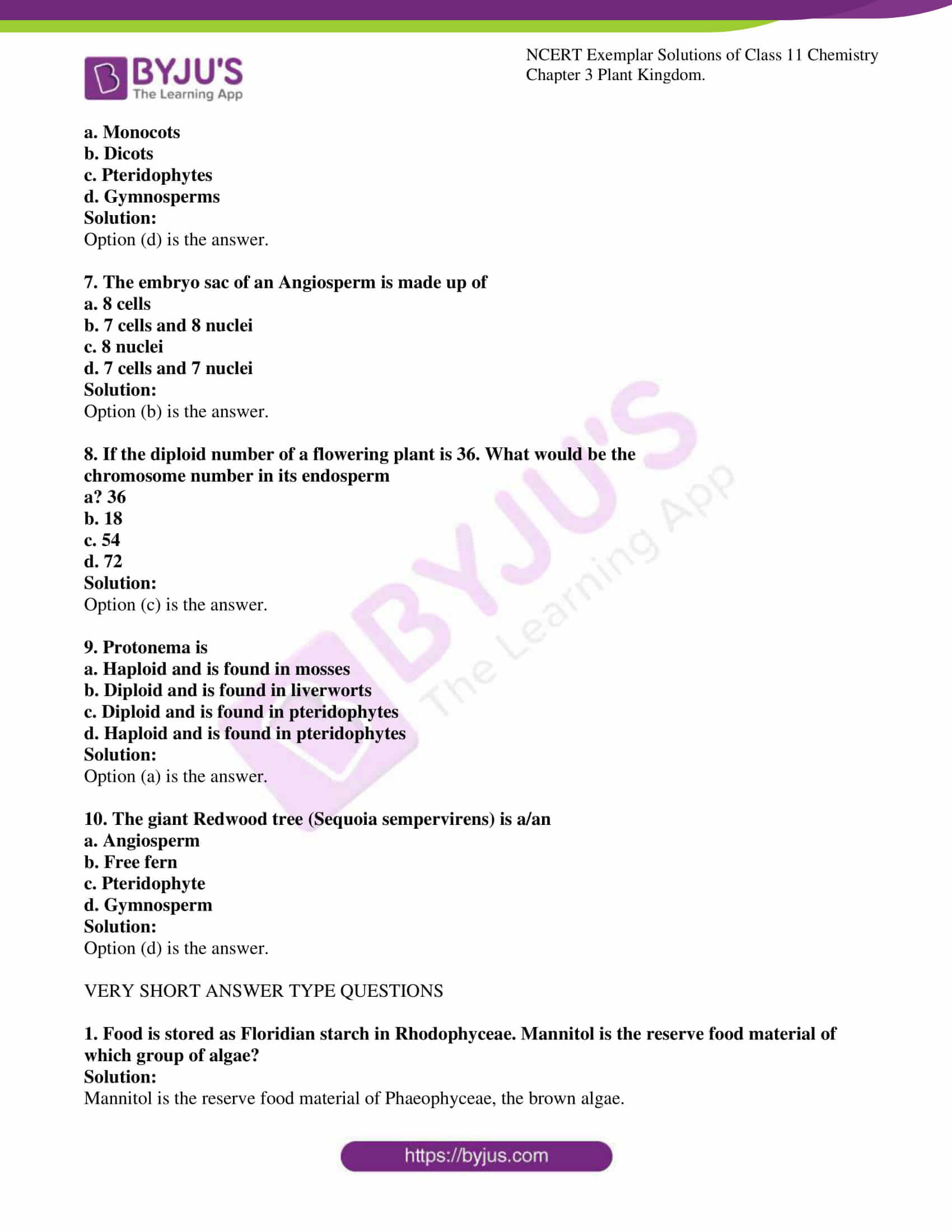
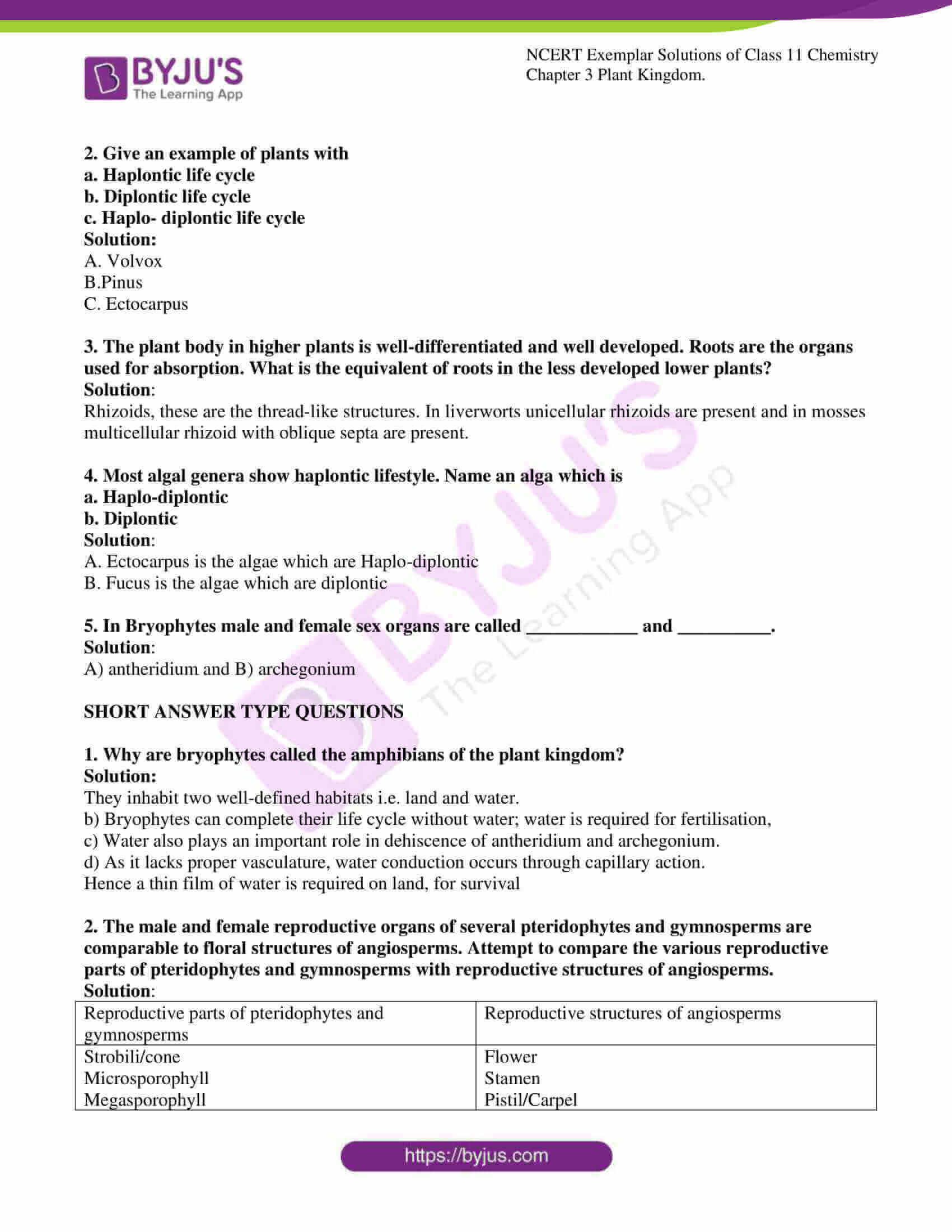



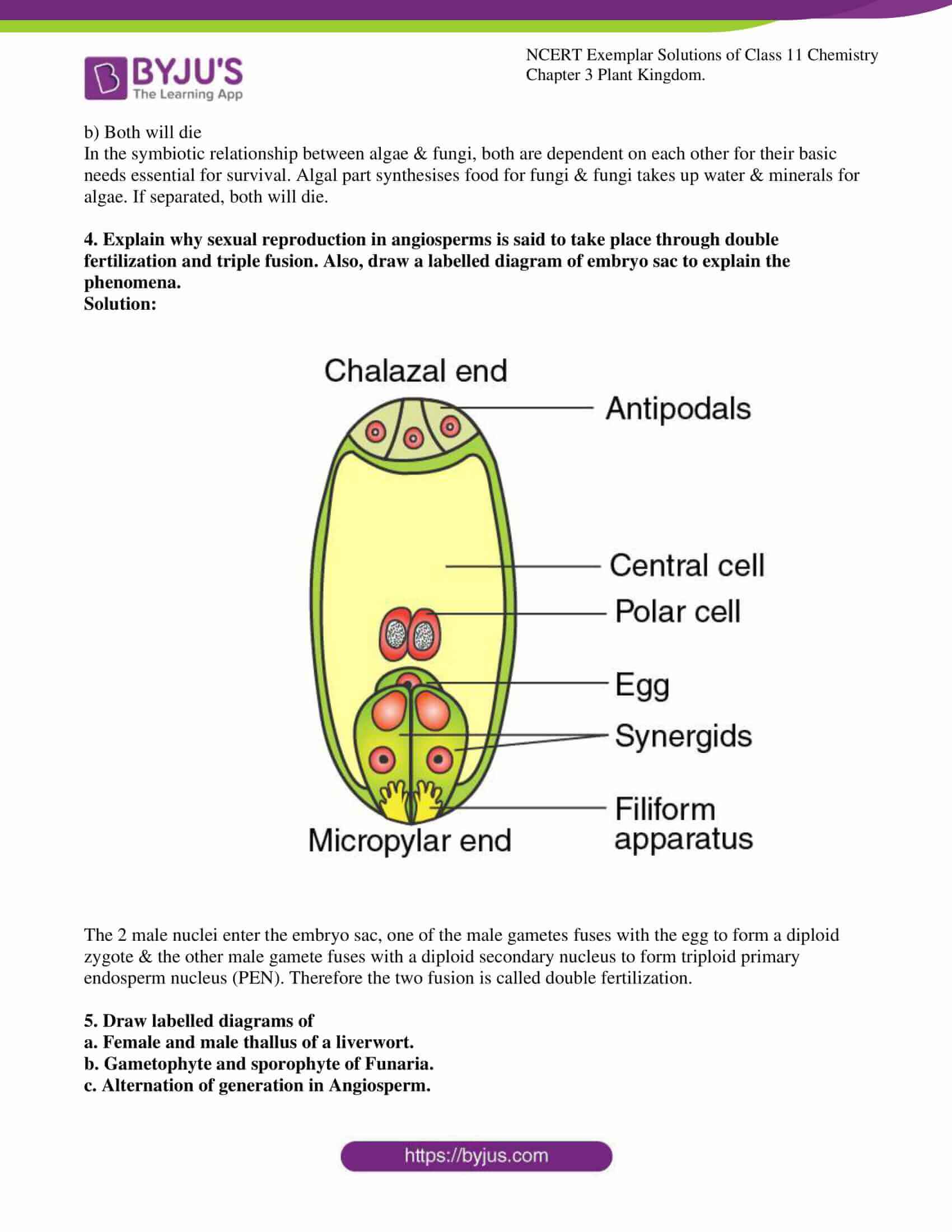

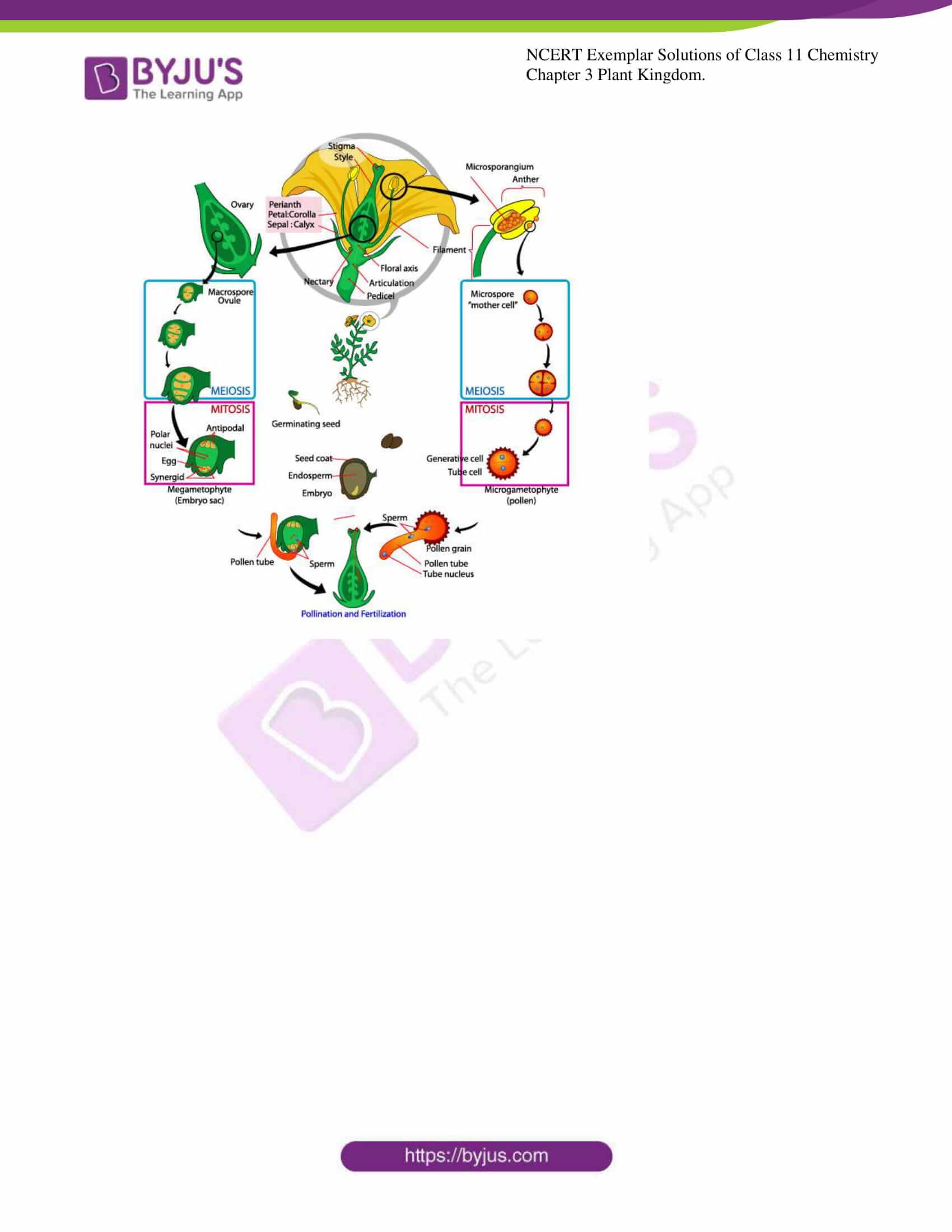
Comments